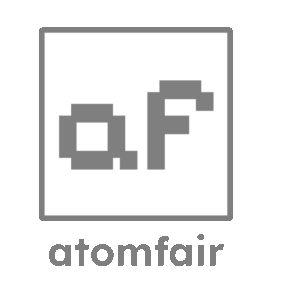Your cart is currently empty!

Atomfair 4-Nitrophenylboronic acid C6H6BNO4 CAS 24067-17-2
4-Nitrophenylboronic acid (CAS No. 24067-17-2) is a high-purity boronic acid derivative with the molecular formula C6H6BNO4. This compound, also known by its IUPAC name (4-nitrophenyl)boronic acid , is a versatile reagent widely used in organic synthesis, pharmaceuticals, and materials science. It features a boronic acid functional group (-B(OH)2) attached to a nitrophenyl ring, making it an excellent candidate for Suzuki-Miyaura cross-coupling reactions, a cornerstone of modern synthetic chemistry. Our product is rigorously tested for purity, ensuring optimal performance in sensitive applications. Available in various quantities, it is supplied with detailed analytical certificates (CoA) including HPLC, NMR, and MS data to…
Description
4-Nitrophenylboronic acid (CAS No. 24067-17-2) is a high-purity boronic acid derivative with the molecular formula C6H6BNO4. This compound, also known by its IUPAC name (4-nitrophenyl)boronic acid, is a versatile reagent widely used in organic synthesis, pharmaceuticals, and materials science. It features a boronic acid functional group (-B(OH)2) attached to a nitrophenyl ring, making it an excellent candidate for Suzuki-Miyaura cross-coupling reactions, a cornerstone of modern synthetic chemistry. Our product is rigorously tested for purity, ensuring optimal performance in sensitive applications. Available in various quantities, it is supplied with detailed analytical certificates (CoA) including HPLC, NMR, and MS data to guarantee traceability and consistency for researchers and industrial scientists.
Properties
- CAS Number: 24067-17-2
- Complexity: 161
- IUPAC Name: (4-nitrophenyl)boronic acid
- InChI: InChI=1S/C6H6BNO4/c9-7(10)5-1-3-6(4-2-5)8(11)12/h1-4,9-10H
- InChI Key: NSFJAFZHYOAMHL-UHFFFAOYSA-N
- Exact Mass: 167.0389878
- Molecular Formula: C6H6BNO4
- Molecular Weight: 166.93
- SMILES: B(C1=CC=C(C=C1)[N+](=O)[O-])(O)O
- Topological: 86.3
- Monoisotopic Mass: 167.0389878
- Synonyms: 4-Nitrophenylboronic acid, 24067-17-2, DTXSID50378549, DTXCID50329576, 627-647-7, (4-nitrophenyl)boronic Acid, 4-Nitrobenzeneboronic acid, p-nitrophenylboronic acid, 4-Nitrophenyl boronic acid, MFCD00161360, Boronic acid, (4-nitrophenyl)-, p-nitrophenyl boronic acid, 4-Nitro phenyl boronic acid, 4-nitrobenzenboronic acid, (4-nitrophenyl)boranediol, 4-nitro-phenylboronic acid, (4-nitrophenyl)boronicAcid, para-nitrophenylboronic acid, SCHEMBL5993, 4-nitro-phenyl boronic acid, CHEMBL91108, SCHEMBL14727519, BDBM26130, NSFJAFZHYOAMHL-UHFFFAOYSA-N, 4-Nitrophenylboronic Acid (contains varying amounts of Anhydride), CS-D0729, BBL103704, RB3032, STL557514, AKOS009157614, 4-Nitrophenylboronic acid, >=95.0%, AB04238, FN14560, GS-6522, NCGC00249507-01, AC-25841, HY-50807, PD131129, SY009037, DB-016077, N0812, EN300-55471, Z838078136, UKH
Application
4-Nitrophenylboronic acid is primarily employed as a key intermediate in Suzuki-Miyaura cross-coupling reactions for the synthesis of biaryl compounds, which are critical in pharmaceutical and agrochemical development. It also serves as a building block in the preparation of sensors and molecular recognition systems due to its boronic acid group’s affinity for diols and sugars. Additionally, this compound finds use in polymer chemistry and materials science for modifying surfaces or creating functionalized materials with tailored properties.
Safety and Hazards
GHS Hazard Statements
- H302 (87.5%): Harmful if swallowed [Warning Acute toxicity, oral]
- H315 (18.8%): Causes skin irritation [Warning Skin corrosion/irritation]
- H319 (18.8%): Causes serious eye irritation [Warning Serious eye damage/eye irritation]
- H335 (16.7%): May cause respiratory irritation [Warning Specific target organ toxicity, single exposure; Respiratory tract irritation]
Precautionary Statements
- P261, P264, P264+P265, P270, P271, P280, P301+P317, P302+P352, P304+P340, P305+P351+P338, P319, P321, P330, P332+P317, P337+P317, P362+P364, P403+P233, P405, and P501
Hazard Classes and Categories
- Acute Tox. 4 (87.5%)
- Skin Irrit. 2 (18.8%)
- Eye Irrit. 2A (18.8%)
- STOT SE 3 (16.7%)
If you are interested or have any questions, please contact us at support@atomfair.com
Disclaimer: Sold exclusively for laboratory research. Prohibited for commercial use, diagnostics, or human/animal applications. Buyers assume all compliance liability.
Only logged in customers who have purchased this product may leave a review.
Related products
-
Atomfair (2S)-2-amino-6-((2,2,2-trifluoroacetyl)amino)hexanoic acid H-Lys(Tfa)-OH, TfAcK, e-TFA-lysine C8H13F3N2O3 CAS 10009-20-8
-
Atomfair (alphaR)-4-Chloro-2-(3-methyl-1H-pyrazol-1-yl)-alpha-(trifluoromethyl)benzenemethanol C12H10ClF3N2O CAS 1033805-26-3
-
Atomfair 1-(2-Bromo-4-fluorophenyl)ethan-1-one 2′-Bromo-4′-fluoroacetophenone C8H6BrFO CAS 1006-39-9
-
Atomfair 1-(2-Bromo-4-methylphenyl)ethan-1-one C9H9BrO CAS 103286-27-7
-
Atomfair 1-(2-Bromo-5-fluorophenyl)ethan-1-one C8H6BrFO CAS 1006-33-3

Reviews
There are no reviews yet.